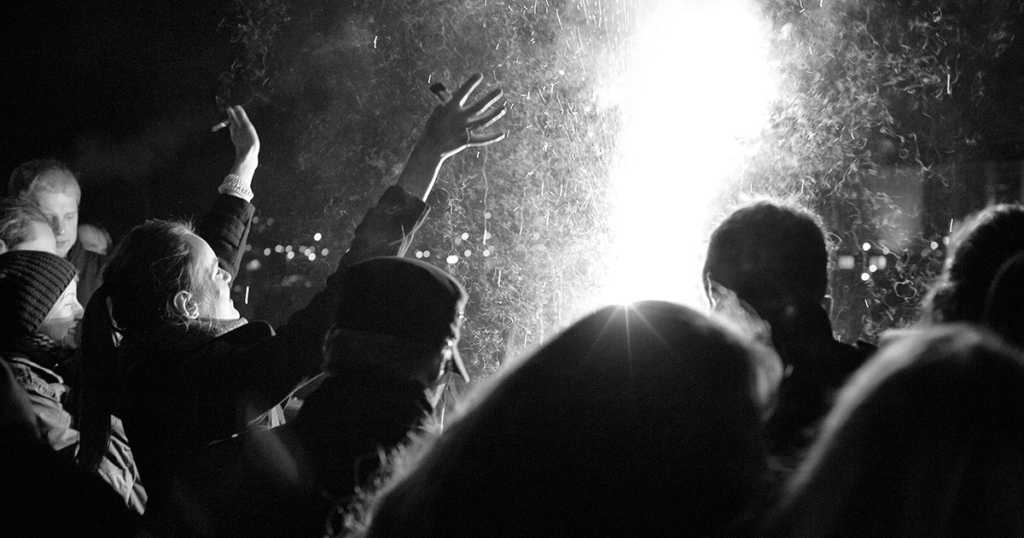
Christmas Eve, 1968, MONS, Belgium—Confined against my will to a military hospital bed, I should consider myself lucky. I’m repeatedly told by doctors and orderlies, “You could be in Nam, your body laced with shrapnel.” Instead, my orders issued in Fort Dix, New Jersey, sent me to the Supreme Headquarters Allied Powers Europe (SHAPE). I’ve only just arrived, after at least 48 cold, sleepless hours on planes, buses, trucks, jeeps, and hurrying-up-and-waiting—no doubt why I now have viral pneumonia. Coughing and wheezing, my head hot and hurting, I nonetheless crave a Lucky or a Camel (nonfilter, of course). Outside the hospital window, all I can see is a starless sky and an eerie mist camouflaging the flat Flanders fields, from which half-century-old ghosts of World War I soldiers might emerge. But I’m still alive.
To be well enough, in just a few short days, to celebrate New Year’s: that is the extent of my hopes and dreams. A Leap Year, 1968 is lingering longer than normal, as if an extra day is needed to accommodate all of the year’s apocalyptic horror and chaos. So when 1968 finally does end and the world does not, New Year’s celebrations will be understandably giddy; the eschatological moment will have passed and we who are young at the time can still have a chance to grow old.
Fifty years later, we have indeed grown old. What is to be said?
“Yes, things are bad, but 1968 was worse.” To put a brave face on the country’s current state of affairs, observers often invoke 1968. It offers comfort as a touchstone for measuring political and cultural turmoil: if we could get through 1968, we can get through today, even if today seems like an undeclared civil war.
But increasingly you’re beginning to hear, “It’s even worse now than 1968.” Even worse than the deadliest year for Americans in Vietnam? Even worse than the assassinations, barely two months apart, of Martin Luther King Jr. and Robert F. Kennedy? Surely the peaceful women’s marches of today, though frequent and large, can’t be compared to the violent antiwar protests of 1968?
The problematic presidency of Richard Nixon, who was first elected in 1968, offers another touchstone. The current president “is making the long nightmare of Nixon’s Watergate seem like a brief idyllic daydream,” tweeted John Dean, Nixon’s White House counsel, this November. “Nixon=corrupt; Trump=evil.”
However history judges Trump, he (along with most of the country’s recent leaders) is a Baby Boomer (as am I), who came of age in 1968. Indeed, in Europe the Boomer cohort is often referred to as the “1968 Generation.” If the United States is indeed worse off now than then, the blame must surely go to those of us who were young a half-century ago. Remembrance must be coupled with responsibility, but few feel guilty.
“Inchoate nihilism whose sole objectives are destruction”: that was the only possible explanation for the 1968 student protests on Columbia’s campus, according to Grayson L. Kirk, the university president at the time. His words seem prescient, eerily similar to the Trump administration’s mission (enunciated by fellow Boomer and former White House strategist, Stephen K. Bannon) of nothing less than “the deconstruction of the administrative state.”
Strangely, the final days of 1968 brought a renewed sense of hope from a most unexpected place: outer space. It came in the form of a color photograph taken on Christmas Eve by the Apollo 8 astronauts, the first humans to escape Earth’s orbit and circle the moon. Soon known as “Earthrise,” it has been called the world’s most famous photograph, endlessly reproduced in various media. The now iconic image of the Earth as a fragile, beautiful, pale blue orb floating in space over the lunar horizon awakened a newly shared sense of wonder and stewardship for our home planet. Transcending national boundaries and tribal partisanship, the image is credited with inspiring the real beginning of the environmental movement.
But today, the ever-darkening shadow of our collective inability to address manmade climate change looms. The prospect of planetary catastrophe—a true apocalypse—brings mostly denial and political paralysis. So, yes, things are worse today than in 1968, and they will likely be even worse in another 50 years. Or am I no longer hopeful simply because I am no longer young?

